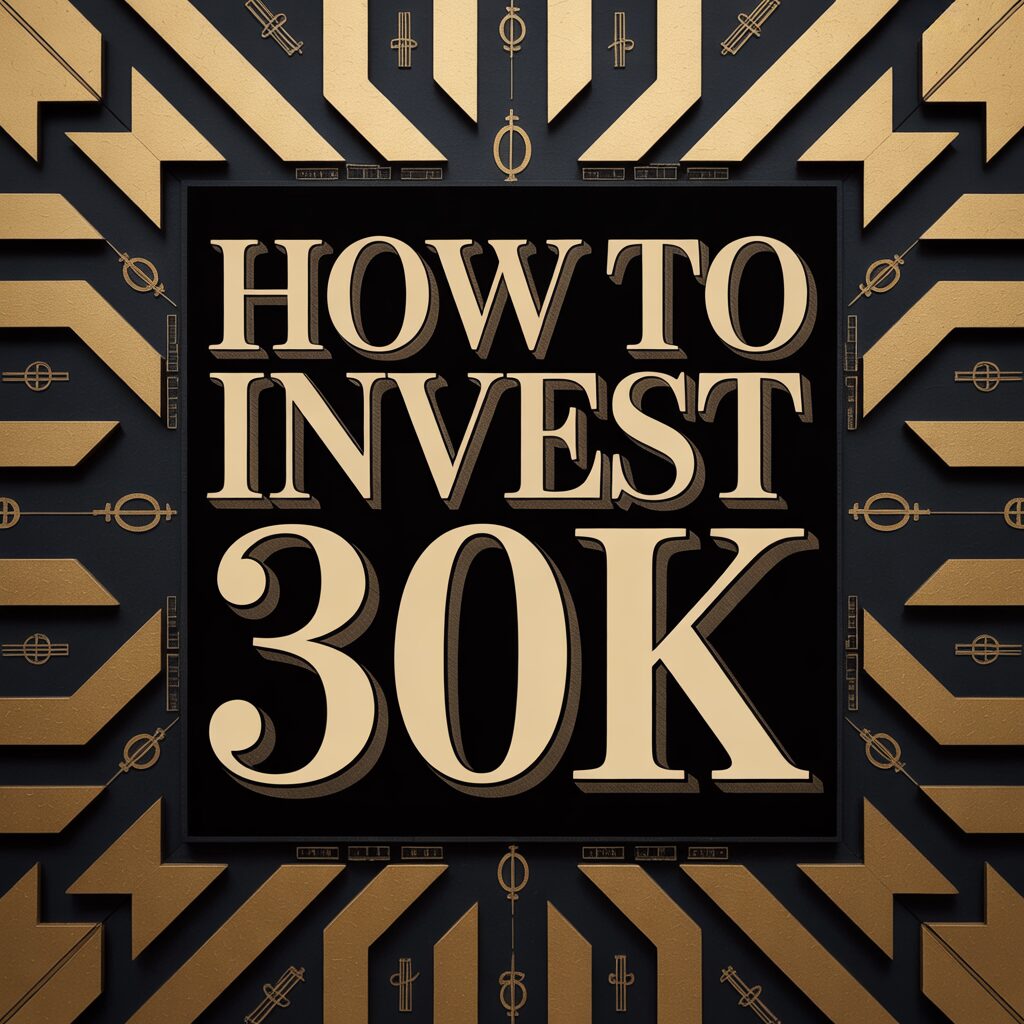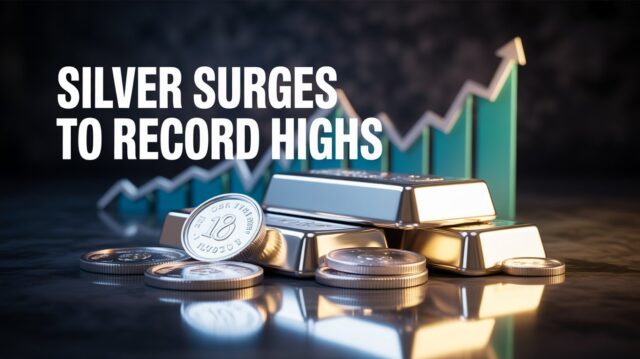Introduction: Making Your £30,000 Work Harder
You have £30,000 – a significant sum that could transform your financial future. Whether you’re a first-time investor or looking to expand your existing portfolio, this comprehensive guide will show you the most effective ways to invest £30k in the UK market.
Many people wonder whether they should save or invest such a substantial amount. While savings accounts offer security, investing your £30,000 wisely could potentially generate far greater returns over the long term, helping you stay ahead of inflation and build real wealth.
Why Invest Rather Than Save? The Inflation Reality Check
The Savings Trap
Traditional savings accounts, while safe, may not protect your purchasing power. Even with the Bank of England base rate around 5% in mid-2025, many savings accounts offer 4-5% interest. However, when inflation eats into your returns, your money’s real value could actually decrease over time.
The Investment Advantage
Investing offers the potential for returns that can outpace inflation. The FTSE 100, for example, has historically delivered average annual returns of 7-8%. While past performance doesn’t guarantee future results, investing your £30,000 could be one of the most effective ways to grow your wealth over the long term.
Important: All investments carry risk, and you could get back less than you invest. The key is finding the right balance for your situation.
Step 1: Know Yourself as an Investor
Before diving into investment options, you need to understand your investor profile:
Risk Tolerance
- How comfortable are you with potential losses?
- Can you sleep soundly if your investments drop 20% in value?
- Higher risk often means higher potential returns, but also greater potential losses
Financial Goals
- Retirement planning?
- House deposit?
- General wealth building?
- Passive income generation?
Time Horizon
- Short-term (less than 5 years): Consider lower-risk options
- Long-term (5+ years): Can weather market volatility for potentially higher returns
Emergency Fund Check
- Do you have 3-6 months of living expenses in easy-access savings?
- Never invest money you might need suddenly
The Best Ways to Invest £30,000 in the UK
1. Stocks and Shares ISA: Your Tax-Free Foundation
Why ISAs Are Essential A Stocks and Shares ISA should be your first port of call. With a £20,000 annual allowance for 2025/26, you can shelter a significant portion of your £30k from tax.
Key Benefits:
- No income tax on dividends
- No capital gains tax on profits
- Complete flexibility in what you invest in
- Tax-free compound growth
Strategy: Invest £20,000 in your ISA this tax year, then consider what to do with the remaining £10,000.
2. Exchange Traded Funds (ETFs): Instant Diversification
Why ETFs Are Perfect for £30k Investments ETFs offer immediate diversification across hundreds or thousands of companies with a single purchase.
Top ETF Options:
- FTSE All-Share ETF: Broad UK market exposure
- S&P 500 ETF: Access to America’s largest companies
- Global ETFs: Worldwide diversification
- Emerging Markets ETFs: Higher risk, higher potential reward
Benefits:
- Low fees (typically 0.1-0.5% annually)
- Professional management
- Liquid – can be sold easily
- Perfect for beginners and experts alike
3. Individual Stocks: Higher Risk, Higher Potential
The Direct Approach Investing directly in company shares gives you ownership stakes in businesses you believe in.
Consider:
- FTSE 100 Companies: Established, dividend-paying giants
- FTSE 250 Companies: Mid-cap growth opportunities
- International Stocks: Global diversification
Warning: Individual stock picking requires research and carries higher risk. Never put all £30k into a single company.
4. Bonds: The Stability Factor
Why Bonds Matter Bonds are essentially loans to governments or companies that pay fixed interest over set periods.
Types to Consider:
- UK Government Bonds (Gilts): Lowest risk
- Corporate Bonds: Higher yields, more risk
- Bond ETFs: Diversified bond exposure
Current Advantage: With interest rates around 5%, newly issued bonds may offer attractive yields.
5. Property Investment: Bricks and Mortar Options
Direct Property Investment £30,000 might not buy property outright, but it could provide a substantial deposit in some UK regions.
Real Estate Investment Trusts (REITs)
- Invest in property without direct ownership
- Regular dividend payments
- Can be held in ISAs
- More liquid than direct property
Property Funds
- Pooled property investments
- Professional management
- Lower entry costs than direct investment
6. Pension Contributions: Turbocharge Your Retirement
The Tax Relief Advantage Pension contributions receive government tax relief:
- Basic rate taxpayers: £80 becomes £100
- Higher rate taxpayers: Even more generous relief
Long-term Strategy
- Money locked until age 55 (rising to 57 from 2028)
- Compound growth over decades
- One of the most tax-efficient investments available
7. General Investment Account (GIA): Beyond the ISA Limit
For Your Remaining £10,000 After maxing out your ISA, a GIA offers unlimited investment capacity.
Tax Considerations:
- Capital gains tax on profits above £3,000 annually
- Dividend tax on income above £1,000 allowance
- Still worthwhile for long-term growth
Building Your £30,000 Portfolio: Sample Allocations
Conservative Approach (Lower Risk)
- 60% Bonds/Bond ETFs (£18,000)
- 30% Dividend-paying stocks/ETFs (£9,000)
- 10% Cash/High-yield savings (£3,000)
Balanced Approach (Moderate Risk)
- 50% Global ETFs (£15,000)
- 30% UK stocks/FTSE ETFs (£9,000)
- 15% Bonds (£4,500)
- 5% Individual growth stocks (£1,500)
Aggressive Approach (Higher Risk)
- 70% Growth stocks/ETFs (£21,000)
- 20% Emerging market ETFs (£6,000)
- 10% Individual high-growth stocks (£3,000)
Critical Considerations Before You Invest
1. Clear High-Interest Debt First
If you have credit card debt or expensive loans, consider paying these off first. The guaranteed “return” from clearing 20%+ interest debt often beats investment returns.
2. Understand All Costs
- Platform fees
- Fund management charges
- Trading fees
- Exit charges
3. Maintain Liquidity
Ensure you can access emergency funds quickly. Not all investments can be sold immediately without potential losses.
4. Think Long-Term
Successful investing requires patience. Aim to invest for at least 5 years to ride out market volatility.
5. Harness Compound Returns
Reinvesting dividends and gains can dramatically boost your wealth over time. This is where the real magic of investing happens.
When to Seek Professional Advice
Investing £30,000 is a significant decision. Consider professional advice if you:
- Are new to investing
- Have complex financial circumstances
- Want a personalized investment strategy
- Feel overwhelmed by the options
Important: Only use FCA-regulated financial advisors. Check the FCA register to verify credentials.
Maximizing Tax Efficiency in 2025
ISA Strategy
- Use your full £20,000 Stocks and Shares ISA allowance
- Consider transferring existing ISAs to better platforms
- Plan next year’s ISA contribution with remaining funds
Pension Planning
- Consider additional voluntary contributions
- Understand annual and lifetime allowances
- Factor in tax relief benefits
Capital Gains Management
- Use your £3,000 annual CGT allowance
- Consider “bed and ISA” strategies
- Time disposals across tax years
Common Mistakes to Avoid
1. Putting All Eggs in One Basket
Diversification is crucial. Spread your £30k across different asset classes, sectors, and geographies.
2. Trying to Time the Market
Nobody can consistently predict market movements. Regular investing often beats trying to find the perfect entry point.
3. Emotional Decision Making
Don’t panic sell during market downturns or get caught up in investment bubbles.
4. Ignoring Fees
High fees can seriously erode returns over time. Always consider the total cost of ownership.
5. Lack of Regular Review
Your circumstances and goals may change. Review your portfolio annually and rebalance as needed.
Special Considerations for 2025
Current Market Environment
- Higher interest rates affecting bond yields
- Inflation concerns impacting real returns
- Geopolitical uncertainties affecting markets
- Technology sector evolution and opportunities
UK-Specific Factors
- Post-Brexit economic positioning
- Government fiscal policies
- Property market dynamics
- Currency considerations for international investments
Getting Started: Your Action Plan
Week 1: Preparation
- Assess your financial situation
- Define your investment goals
- Determine your risk tolerance
- Ensure emergency fund is in place
Week 2: Research
- Compare ISA providers
- Research ETF options
- Understand platform fees
- Read investment literature
Week 3: Implementation
- Open your Stocks and Shares ISA
- Make your first investments
- Set up regular review schedule
- Consider professional advice if needed
Week 4: Optimization
- Review your initial portfolio
- Plan future contributions
- Set up automatic investing if desired
- Document your investment strategy
Frequently Asked Questions
Q: Is £30,000 enough to start investing seriously? A: Absolutely. £30,000 is a substantial sum that can form the foundation of a significant investment portfolio.
Q: Should I invest it all at once or gradually? A: Both approaches have merit. Lump sum investing can be more effective over time, but gradual investing (dollar-cost averaging) can reduce timing risk.
Q: What if I need some of the money in 2-3 years? A: Only invest money you won’t need for at least 5 years. Keep shorter-term funds in high-yield savings accounts.
Q: How often should I check my investments? A: Monthly or quarterly reviews are sufficient. Daily monitoring can lead to emotional decision-making.
Final Thoughts: Your £30,000 Investment Journey
Investing £30,000 is both an opportunity and a responsibility. Done wisely, this sum could grow significantly over time, helping you achieve your financial goals and build lasting wealth.
Remember:
- Start with your ISA allowance
- Diversification is key
- Think long-term
- Keep costs low
- Stay disciplined
Whether you choose a simple ETF-based approach or build a more complex portfolio, the most important step is to start. Time in the market generally beats timing the market.
Your £30,000 investment journey begins with education, continues with action, and succeeds through patience and discipline. The potential rewards – financial freedom, security, and peace of mind – make the effort worthwhile.
Ready to begin? Take the first step by opening a Stocks and Shares ISA and starting your investment journey today. Your future self will thank you for the decision you make right now.






